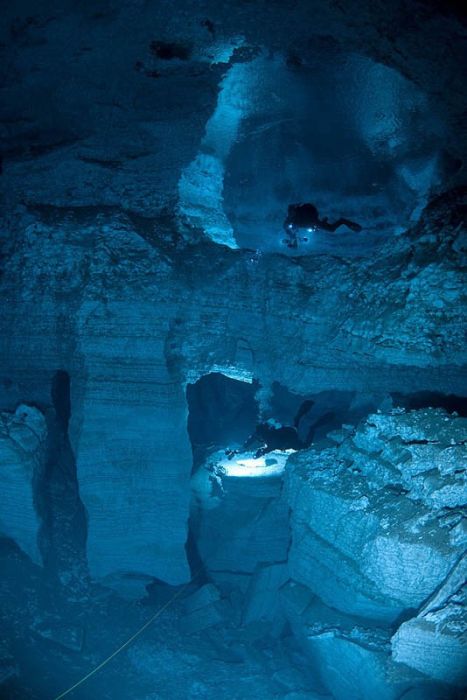|
|
Cave Diving
|
Progress was typically by "bottom walking", as this was considered less dangerous than swimming (note the absence of buoyancy controls). The use of oxygen put a depth limit on the dive, which was considerably mitigated by the extended dive duration. This was the normal diving equipment and methods until approximately 1960 when new techniques using wetsuits (which provide both insulation and buoyancy compensation), twin open-circuit SCUBA air systems the development of side mounting cylinders, helmet-mounted lights and free-swimming with fins. The increasing capacity and pressure rating of air bottles also extended dive durations.
U.S. History
In the 1970s, cave diving greatly increased in popularity among divers in the United States. However, there were very few experienced cave divers and almost no formal classes to handle the surge in interest. The result was a large number of divers trying to cave dive without any formal training. This resulted in more than 100 fatalities over the course of the decade. The state of Florida came close to banning SCUBA diving around the cave entrances. The cave diving organizations responded to the problem by creating training programs and certifying instructors, in addition to other measures to try to prevent these fatalities. This included posting signs, adding no-lights rules, and other enforcements.
|
|









